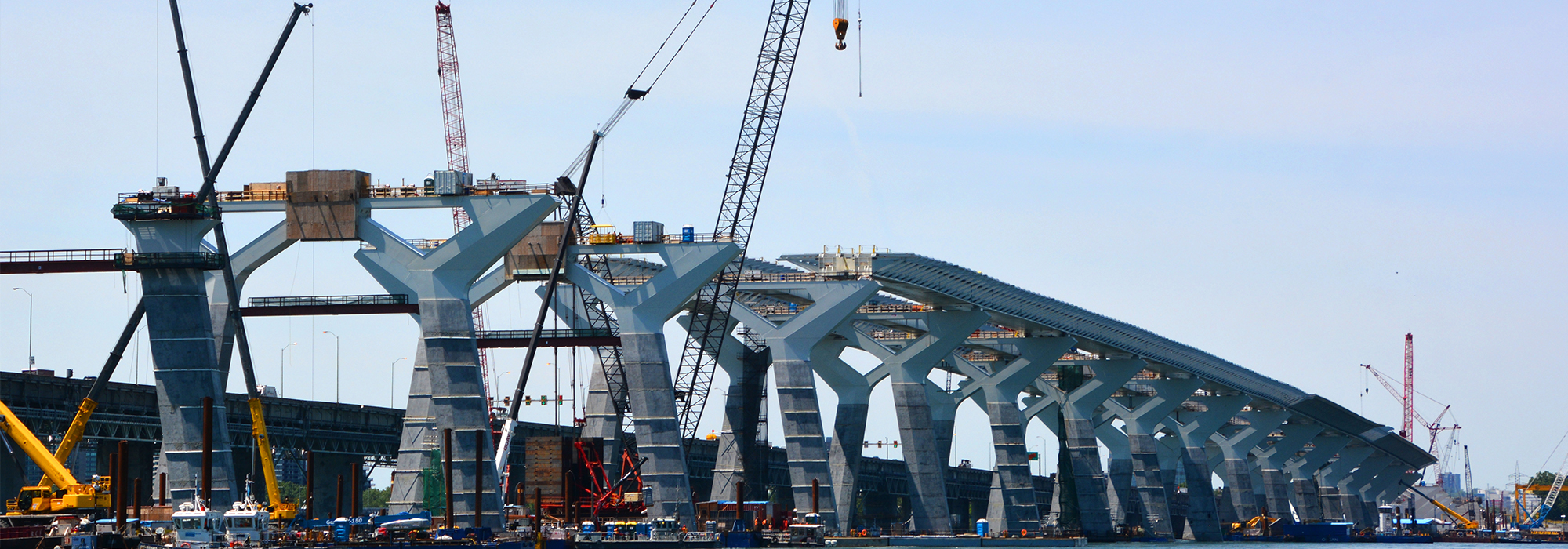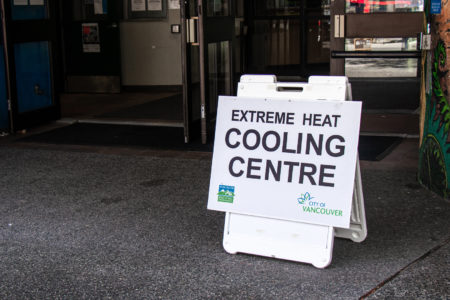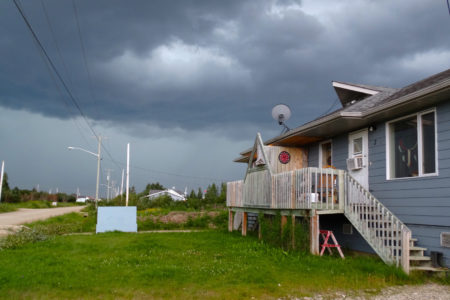
During the last federal election, Liberal Leader Justin Trudeau announced that, if elected, he would not proceed with the plan to charge tolls on Montreal’s new Champlain Bridge — a $4.2-billion project, now nearing completion.
On May 29, 2018, the Auditor General of Canada reported that the decision to eliminate tolls on the federally owned bridge will result in lost revenue to Ottawa of at least $3 billion over 30 years. A previous estimate prepared by the Parliamentary Budget Officer had calculated those losses to be $4.3 billion. Averaging these estimates produces a yearly cost to the Canadian government of $121.7 million, just for the tolls.
In contrast to arrangements for Confederation Bridge in Prince Edward Island, with its $47 toll, Ottawa is also paying all maintenance costs for the Champlain Bridge, at an average of $25.1 million per year. So the total annual cost of the Champlain Bridge, in forgone tolls and maintenance, is $146.8 million.
In 2017 the minister of infrastructure and communities at the time, Amarjeet Sohi, stated that the new Gordie Howe Bridge in Windsor, Ont., will have a toll. Canada now has two major multibillion-dollar bridge projects under way. However, where Windsor’s Gordie Howe Bridge, estimated to cost $5.7 billion to build and maintain, will charge a toll, the replacement Champlain Bridge in Montreal will be toll-free. Meanwhile, Prince Edward Islanders continue to pay $47 to use Confederation Bridge, which cost slightly over $1 billion to construct in the 1990s.
Why are Canadian taxpayers paying the full construction and maintenance cost of the Champlain Bridge in Montreal, while users of the other bridges pay a toll to cover those same expenses, when all three bridges are owned by the government of Canada?
To be specific, why is the federal government prepared to spend over $146 million annually to remove the toll on the Champlain Bridge and cover the maintenance costs, but not to spend much less to remove the toll on Confederation Bridge? The subsidy to the Confederation Bridge operator, plus the lost revenue from tolls, would still be less money than the yearly cost of the subsidy to the Champlain Bridge.
If toll revenue is so important to the sustainability of the government’s infrastructure renewal program, why isn’t there a toll on the Champlain Bridge?
The problem with this discrepancy goes beyond issues of simple fairness, important as those are. The government’s commitment to a toll-free Champlain Bridge flies in the face of its plan to, in the words of its 2016 Economic Statement, “leverage its investments in infrastructure, by bringing in private capital.” In other words, government will no longer be expected to foot the entire bill for large-scale infrastructure projects, but rather will partner with, or leave the entire job to, the private sector. Of course, private investors aren’t going to fund Canadian transportation infrastructure projects out of the goodness of their hearts: they expect to make their money back with more besides, and that means tolls. All this begs the question: If toll revenue is so important to the sustainability of an infrastructure renewal program, why isn’t there a toll on the Champlain Bridge?
The federal government is not being straightforward with Canadians on why it is not charging tolls on Montreal’s new Champlain Bridge but is continuing its user-pay policy on Confederation Bridge in Prince Edward Island and the future Gordie Howe Bridge in Windsor. In fact, it is putting forth arguments that are, at best, flawed.
For example, government representatives keep repeating, as Sohi stated in the Senate on May 10, 2016:
Related to the new toll-free Champlain Bridge in Montreal, the bridge that we are building is a replacement. It is not a new bridge. The bridge that already exists needs to be replaced. The reason we are committed to not having a toll on the new Champlain Bridge is that the current one does not have a toll.
Sohi made the same argument in September 2017. In reality, the current Champlain Bridge charged a toll for half of its existence, from 1962 until the toll was abolished on May 4, 1990, roughly 28 years.
Furthermore, the idea that there can’t be a toll on the new Champlain Bridge because it is a “replacement” would also apply to Confederation Bridge, replacing as it did a ferry service. Canada made a constitutional promise to Prince Edward Island as part of its entry into Confederation in 1873. The Terms of Union required:
That the Dominion Government shall assume and defray all the charges for the following services, viz.:–
. . .
Efficient Steam Service for the conveyance of mails and passengers, to be established and maintained between the Island and the mainland of the Dominion, Winter and Summer, thus placing the Island in continuous communication with the Intercolonial Railway and the railway system of the Dominion.
In other words, a year-round connection between Prince Edward Island and Canada was a precondition for the colony’s entry into Confederation. As time and technology advanced, “continuous communication” evolved from “steam service” and ice boats to car ferries and ultimately to the permanent fixed link that is Confederation Bridge, a development acknowledged, and indeed enabled, by a 1993 amendment to the Constitution that clarified that “a fixed crossing joining the Island to the mainland may be substituted for the steam service.” As busy and important as the Champlain Bridge — new or old — might be, it does not exist to meet a constitutional requirement. Confederation Bridge does.
It also bears remembering that there is no requirement in law that the replacement for a toll-free bridge cannot itself charge a toll. In fact, the original plan for the replacement Champlain Bridge included tolls that were estimated (by the Parliamentary Budget Officer) to range between $2.60 and $3.90 and were included in the 2014 federal budget.
If all Canadian taxpayers must collectively finance the cost of both construction and maintenance of the Champlain Bridge, and Montreal ends up getting a $4-billion government-funded bridge with no tolls, then Canadians in the rest of the country have a right to receive equal treatment. If we are going to discard the long-standing user-pay policy for transportation megaprojects in Canada, then Prince Edward Islanders can look forward to the removal of tolls on Confederation Bridge. And residents of Southern Ontario should be able to cross their new bridge without paying both to build it and to use it.
Prime Minister Trudeau recognized the problem with the $47 toll on Confederation Bridge in his remarks during a town hall meeting on January 13, 2017, when he called Confederation Bridge “an expensive bridge to build and it’s an expensive bridge to cross.” At that same public meeting, in Peterborough, Ont., he committed to “look at what can be done to make sure that people are able to travel freely, travel efficiently, and openly across this country at modest costs.”
Prince Edward Islanders are still waiting for the Prime Minister to deliver those “modest costs.” Hopefully the Auditor General’s report of May 2018 will spur him to take action.
Ultimately, the government of Canada must answer two questions. Does the policy of a toll-free Champlain Bridge make any financial sense to anyone? And why are Canadians being treated differently depending upon where they live?
Photo: Shutterstock, by meunierd.
Do you have something to say about the article you just read? Be part of the Policy Options discussion, and send in your own submission. Here is a link on how to do it. | Souhaitez-vous réagir à cet article ? Joignez-vous aux débats d’Options politiques et soumettez-nous votre texte en suivant ces directives.








